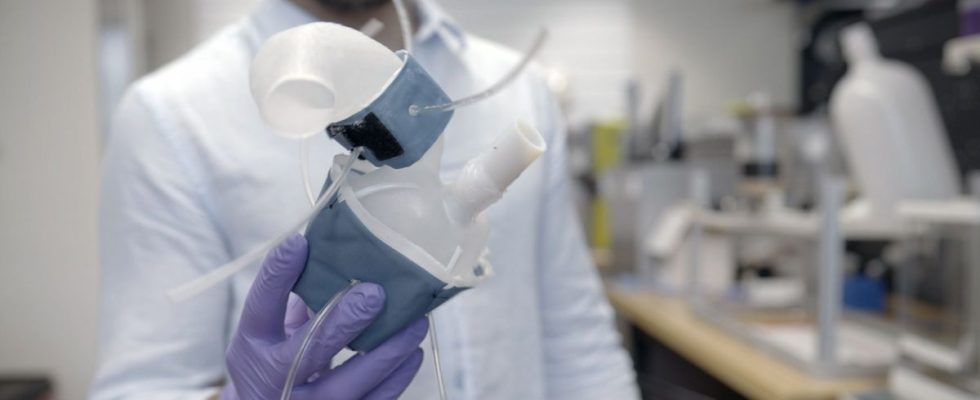Published on
Updated
Reading 2 mins.
MIT researchers have invented and created the functional 3D printed twin of a human heart. This is not intended to be transplanted, but would allow all the necessary tests to be carried out before the heart valves are fitted.
No two hearts are the same, each has its own beats, its own pumping capacities… So how can treatments be best adapted, especially when it comes to placing an implant/valves in the heart? A team of MIT researchers has found a way to 3D print functioning hearts, twins of patient hearts. Hearts that will be able to undergo the tests prior to the intervention, to increase its success and limit the risks. The heart model can thus be configured with the same defects as that of the patient.
A 3D heart, a true twin of the heart to be treated
To create a twin heart, the scientists first used computed tomography (CT) to scan images of the patient’s heart in order to model it in 3D. They thus exploited the computer model to 3D print the patient’s left ventricle and the aorta, with a flexible photopolymer resin.
They then added sleeves similar to blood pressure cuffs that wrap around a printed heart and aorta to mimic the pumping action of the heart. Researchers can even inflate a separate sleeve surrounding an imprinted aorta to constrict the vessel and thus mimic aortic stenosis – a condition in which the aortic valve narrows, causing the heart to work harder to force blood through the body.
Thus designed, the blood flow, the pressure, the size, as well as the shape of the heart are therefore reproduced identically.
Test the best therapeutic option before the operation
Beyond a possible interest for heart transplants (to which the authors do not refer directly – to test the graft possibly), these models will be useful for example in the event of aortic stenosis. Doctors usually treat this condition by surgically implanting a synthetic valve designed to widen the natural valve of the aorta.
Using these models of each patient’s heart, doctors could implant a variety of valves into the printed model to see which one is best suited for that particular patient. The icing on the cake, the researchers also used artificial blood, to achieve the effect of the valves used. An impressive work of mimicry. According to the researchers, the replica hearts could even be used by research labs and the medical device industry to test therapies for various types of heart disease.
“All hearts are different says Luca Rosalia, a graduate student in the MIT-Harvard program in health science and technology. “There are massive variations, especially when patients are sick. The advantage of our system is that we can recreate not only the shape of a patient’s heart, but also its function in both physiology and disease.”.
A heart model printed during the day?
The hearts thus printed are of course not intended to be implanted. But recreating the pumping capacities of each patient is nevertheless an important advance in medicine: such a “model” as real as life, makes it possible to better prepare for a risky operation. And therefore, to increase the chances of success.
To date, around fifteen patient replicas have been produced, the researchers announce. A practice which they believe could be democratized: in the study, Christopher Nguyen, one of the authors, believes that it would be possible, in the long term, to print the device on the same day as the medical examinations are carried out.
